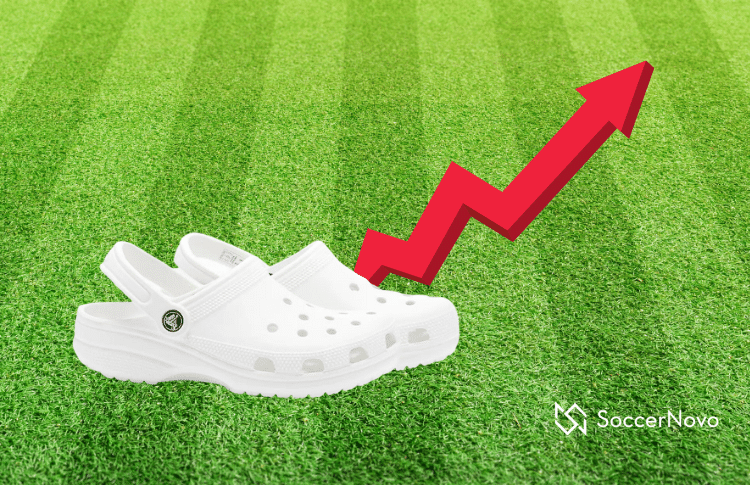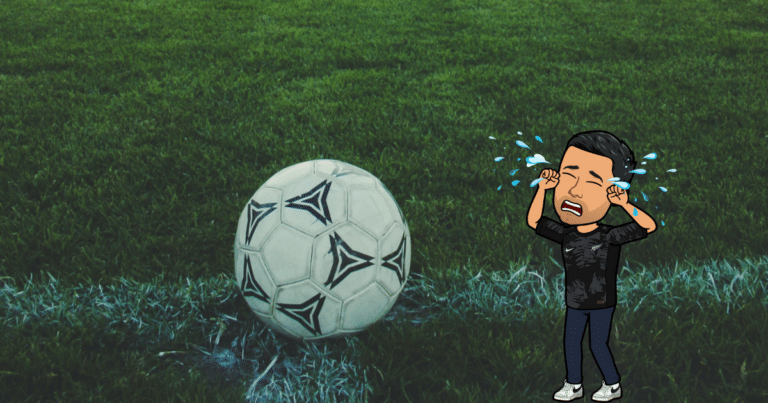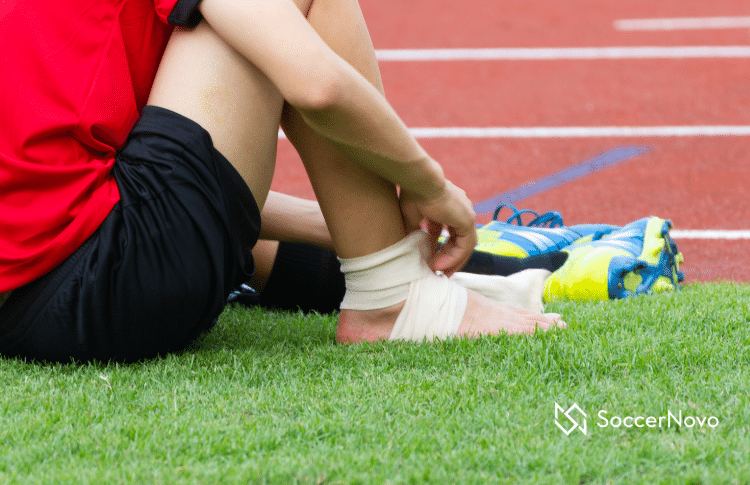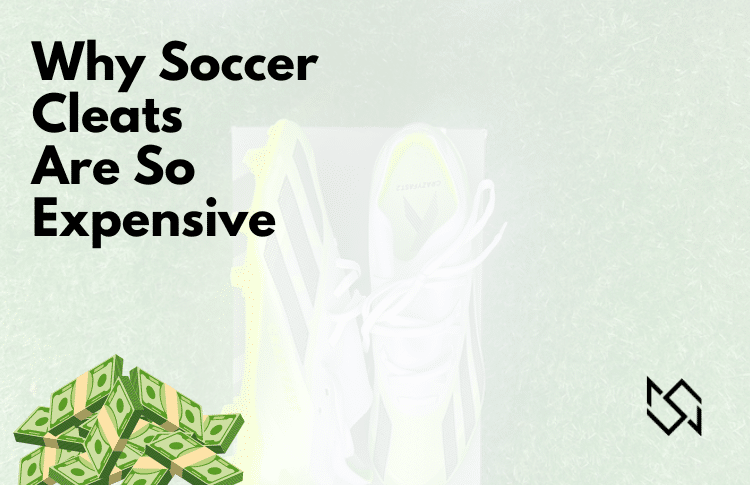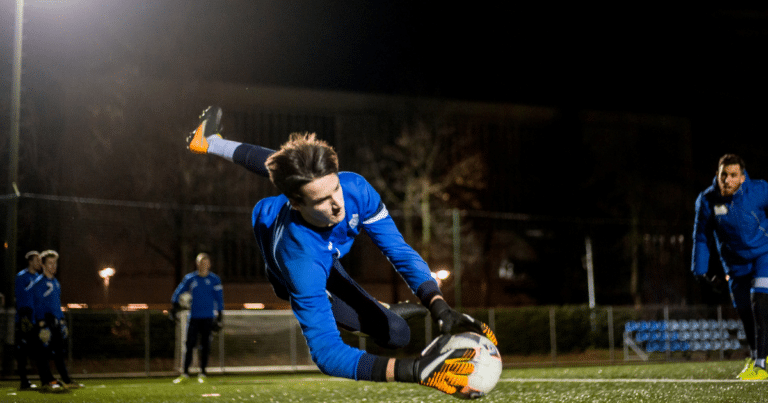Soccer Equipment List
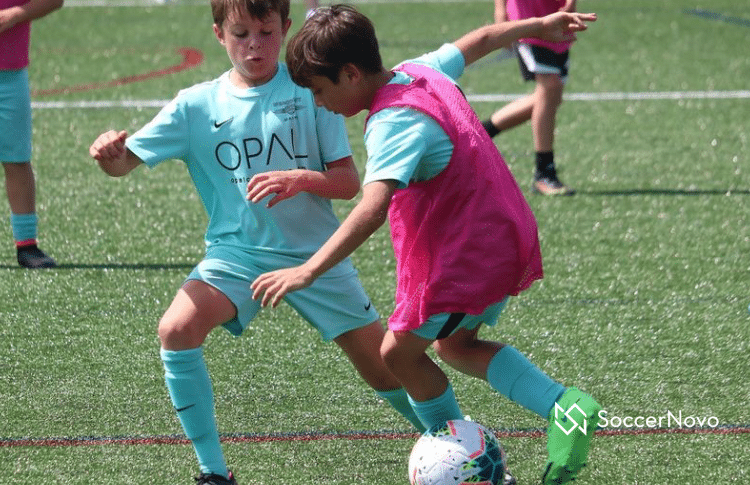
Congrats! You’ve just signed up your little athlete for a youth soccer season. Now, you get to shower your athlete with some soccer gear.
In order to play soccer, what gear is required? Honestly, youth soccer equipment is pretty basic and easy to find online or at your local sporting goods store.
The following soccer equipment list is required for your kid to participate in the sport.
Soccer Cleats
Your youngster will require soccer-specific cleats (not American football cleats) if they plan on playing in a league.
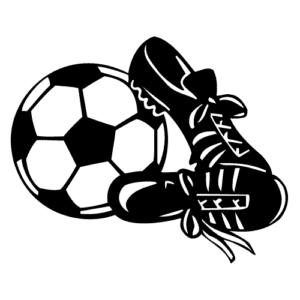 These cleats will give your player the stability and grip they need to succeed on the field.
These cleats will give your player the stability and grip they need to succeed on the field.
Soccer is a sport that calls for constant kicking, changing of direction and fast feet. Soccer shoes meet such requirements.
While your young soccer player will probably just be interested in the color and style of the cleats, you need to go a bit more to choose footwear that is effective.
Let’s look at the soccer shoe’s components before advising on choosing cleats.
- Upper: The upper is the top of a soccer shoe, made of the material covering the foot. It is connected to both the outsole and the midsole.
- Insole: The insole is the inside part where the footrests are located. Inside the shoe, it has padding and support.
- Outsole: The outsole is the outer part of the sole where the studs or spikes are.
- Heel counter: This is part of the soccer shoe that sits behind the heel and provides stability.
Another thing to consider is the type of studs on the soccer shoes. Below are some of the most common styles of soccer shoes:
- Molded (most youth
soccer cleats ): Moldedsoccer cleats integrate studs into the outsole, making the replacement impossible. There are usually 10–14 studs on the bottom of the shoe, and the sole is made of rubber or hard plastic. Most youth soccer leagues require molded cleats because they are the safest and best choice for beginners. Molded cleats are also recommended for playing on firm ground (FG). - Detachable (you’ll want to avoid these for kids): More experienced players sometimes choose studs that can be taken off, which are often best for soft ground. The studs are usually made of either plastic or metal. These
soccer cleats are not recommended for usage on the hard ground since they increase the risk of injury. - Turf shoes: Besides regular
soccer cleats , there is also a turf shoe. They perform admirably on indoor and outdoor hard floors, as well as on artificial turf. These shoes don’t use the usual studs but rely on textured rubber patterns. - Indoor soccer shoes: Indoor soccer shoes are basically lightweight sneakers with a low cut and a flat rubber sole.
Soccer Ball
Your child’s coach may provide balls during practice, but it’s always a good idea to have your own quality soccer ball so you can practice at home.
Instead of using cheap foam or rubber balls, which won’t offer your player a true sense of the game, invest in a higher quality ball.
Just in case you’re interested: A soccer ball has two basic parts: the cover and the bladder. The cover is made of round pieces of strong material, usually, PVC or polyurethane, sewn together. PVC soccer balls are great for young players since they last a long time, don’t get scratched up easily, and are cheap.
Polyurethane balls are softer and respond better, so the material is usually used for higher-end balls.
A ball can seem like a simple purchase, but there are several sizes of soccer balls. Your child’s age and experience level as a soccer player will determine the precise size they need.
A soccer ball can be any size between a 1 and a 5. Balls with bigger size numbers have a wider diameter. Most younger players use a size 3 to a size 4, depending on their age and league rules.
Size 1 balls are occasionally used as skill balls to improve footwork and ball control, although most youth soccer players do not use them.
Here’s a handy sizing guide for soccer balls:
- Size 1: a diameter of 18 to 20 inches
- Size 3: a diameter of 23 to 24 inches
- Size 4: a diameter of 25 to 26 inches
- Size 5: a diameter of 27 to 28 inches
Most kids who are 6 years old or younger use a size 3 soccer ball. The smaller size makes it easier for young kids to control the ball.
Soccer players between 9 and 12 usually play with a size 4 soccer balls.
Players over 13 usually utilize a size 5 ball, the standard size for adults and professional soccer players.
Shin guards
Shin guards, designed to prevent injuries, are also required equipment. They are worn in front of the shin to shield it from stray kicks and flying balls.
Shin guards can help reduce the discomfort, bruising, and impact of regular soccer contact, but they can’t eliminate it entirely.
Shin guards are gently bent so they may fit around the leg’s natural bend. They protect the lower leg in front of the shinbone. Shin protectors are worn beneath the soccer socks.
There are two distinct types of guards.
One style is a single component that fits into the sock. You may also use athletic tape or a specific compression sleeve to hold the shin guards in place.
The slip-in variety of shin guards is more comfortable and convenient to wear, but it doesn’t offer the same level of protection. More experienced players tend to favor these shin protectors.
You can also have shin protection with Velcro straps that fasten behind the leg. Thanks to Velcro, you can get a secure and comfortable fit. Its design is additionally distinguished by a strap that runs under the player’s foot and fastens in a stirrup fashion to keep the shin protection in place. Some shin guards also have cushioning at the bottom to protect the ankles.
The strap-style shin guard may work best for younger players because it won’t move. Furthermore, they often provide more extensive protection. Your kid may feel more comfortable with slip-in shin guards rather than those with straps.
Finding the right size shin guards is crucial for their effectiveness, regardless of the model you pick.
Below is a standard size guide for soccer shin guards:
- Small (Youth): 3’4”-3’8”
- Medium (Youth): 3’9”-4’3”
- Large (Youth): 4’4”-4’8”
- Extra Small (Adult): 4’7”-4’11”
- Small (Adult): 4’11”-5’3”
- Medium (Adult): 5’3”-5’7”
- Large (Adult): 5’7”-5’11”
- Extra Large (Adult): 5’11”-6’7”
Every now and then, you’ll want to wash your child’s shin guards. Otherwise, they will stink up your car and house!
Uniform & Soccer Socks
Youth soccer leagues often mandate uniforms for all participants. This might be anything from a plain T-shirt to an official soccer kit with jerseys, shorts, and socks. Although some leagues provide uniforms, others want you to purchase them on your own.
The same way a player needs
Additional Training Equipment
Even though it’s not required, some young players buy special training gear to practice at home.
With these tools, you can practice special skills at home between official practices. Consider the following training aids if your kid might use a bit of additional guidance:
- Training clothes: While uniforms are worn during games, your young soccer player will need to wear loose, comfortable clothing throughout practice. The best training material is moisture-wicking fabric that will keep a player dry and more comfortable in warmer weather.
- Goalkeeper gloves: If your child wants to be a goalkeeper, you might want to buy them a pair of gloves. These unique gloves support the wrists while letting the fingers move freely. Your child may be too young for the league to use goalies, so you may want to wait to buy gloves until you know they will play that position.
- Water bottle: Soccer players are always on the go, sprinting between ends of the pitch. Typically, the soccer season takes place when the weather is nice. Every player should have their own water bottle to stay hydrated throughout the day. Write their name on the bottle so there won’t be any confusion on the bench.
- Gear bag: You can easily bring all your soccer gear to practices and games with a backpack or tote bag made specifically for the sport. These special bags usually have a place for a soccer ball and all the other gear your child needs.
- Soccer goal: Get a cheap soccer net and set it up in your backyard so your child can practice shooting the soccer ball.
- Speed ladders: Your soccer player may want to get faster and more agile as they get older. An effective home solution is the speed ladder.
- Cones: A cheap set of cones may be a great tool for teaching your kiddo the fundamentals of agility and ball control. Prepare the cones and have them dribble in and out of them to work on their directional shifts.
- Training balls: You can buy special soccer balls with strings that attach the ball to the body. This allows the ball to drop at a set height, perfect for honing your child’s ball control. Here’s a great one we’ve used from SKLZ.
Conclusion
As you can see, soccer is a sport that doesn’t require too much equipment to play.
The essential items include proper footwear, shin guards, a ball and uniform (for games).
When it comes to choosing the right gear, I suggest prioritizing quality and comfort over anything else. It’s easy for kids to get caught up in the bright colors but, as a parent, make sure it’s functional.
With the right equipment, players can enjoy the game of soccer and perform at their best!

Written By: SoccerNovo
SoccerNovo is an independent youth soccer media brand built to help parents, players, and coaches better understand the game and the pathways available in U.S. soccer. Our mission is to make youth soccer simpler, clearer, and more accessible for everyone involved in it.
Let’s connect


